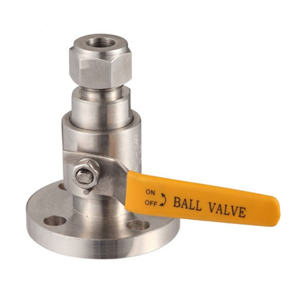来源:本站作者:超级管理员点击: 736
304 is a versatile stainless steel, which is widely used to make equipment and parts that require good overall performance (corrosion resistance and formability).
301 stainless steel shows obvious work hardening during deformation, and is used in various occasions requiring higher strength.
302 stainless steel is essentially a variant of 304 stainless steel with higher carbon content, which can be made to obtain higher strength through cold rolling.
302B is a kind of stainless steel with high silicon content, it has high resistance to high temperature oxidation.
303 and 303Se are free-cutting stainless steels containing sulfur and selenium, respectively, and are used in occasions where free-cutting and high surface finish are mainly required. 303Se stainless steel is also used to make parts that require hot upsetting, because under such conditions, this stainless steel has good hot workability.
304L is a variant of 304 stainless steel with lower carbon content and is used where welding is required. The lower carbon content minimizes the precipitation of carbides in the heat-affected zone near the weld, and the precipitation of carbides may cause stainless steel to produce intergranular corrosion (welding erosion) in certain environments.

304N is a nitrogen-containing stainless steel. Nitrogen is added to increase the strength of the steel.
305 and 384 stainless steels contain higher nickel, and their work hardening rate is low. They are suitable for various occasions that require high cold formability.
308 stainless steel is used to make welding rods.
309, 310, 314 and 330 stainless steels have relatively high nickel and chromium content in order to improve the oxidation resistance and creep strength of the steel at high temperatures. While 30S5 and 310S are variants of 309 and 310 stainless steel, the difference is that the carbon content is lower in order to minimize the carbides precipitated near the weld. 330 stainless steel has particularly high resistance to carburization and thermal shock resistance.
Type 316 and 317 stainless steel contain molybdenum, so the resistance to pitting corrosion in marine and chemical industrial environments is much better than that of 304 stainless steel. Among them, the 316 stainless steel variants include low-carbon stainless steel 316L, nitrogen-containing high-strength stainless steel 316N, and free-cutting stainless steel 316F with higher sulfur content.
321, 347 and 348 are stainless steel stabilized with titanium, niobium plus tantalum, and niobium, respectively, and are suitable for welding components used at high temperatures. 348 is a kind of stainless steel suitable for the nuclear power industry, and has certain restrictions on the combined amount of tantalum and drill.